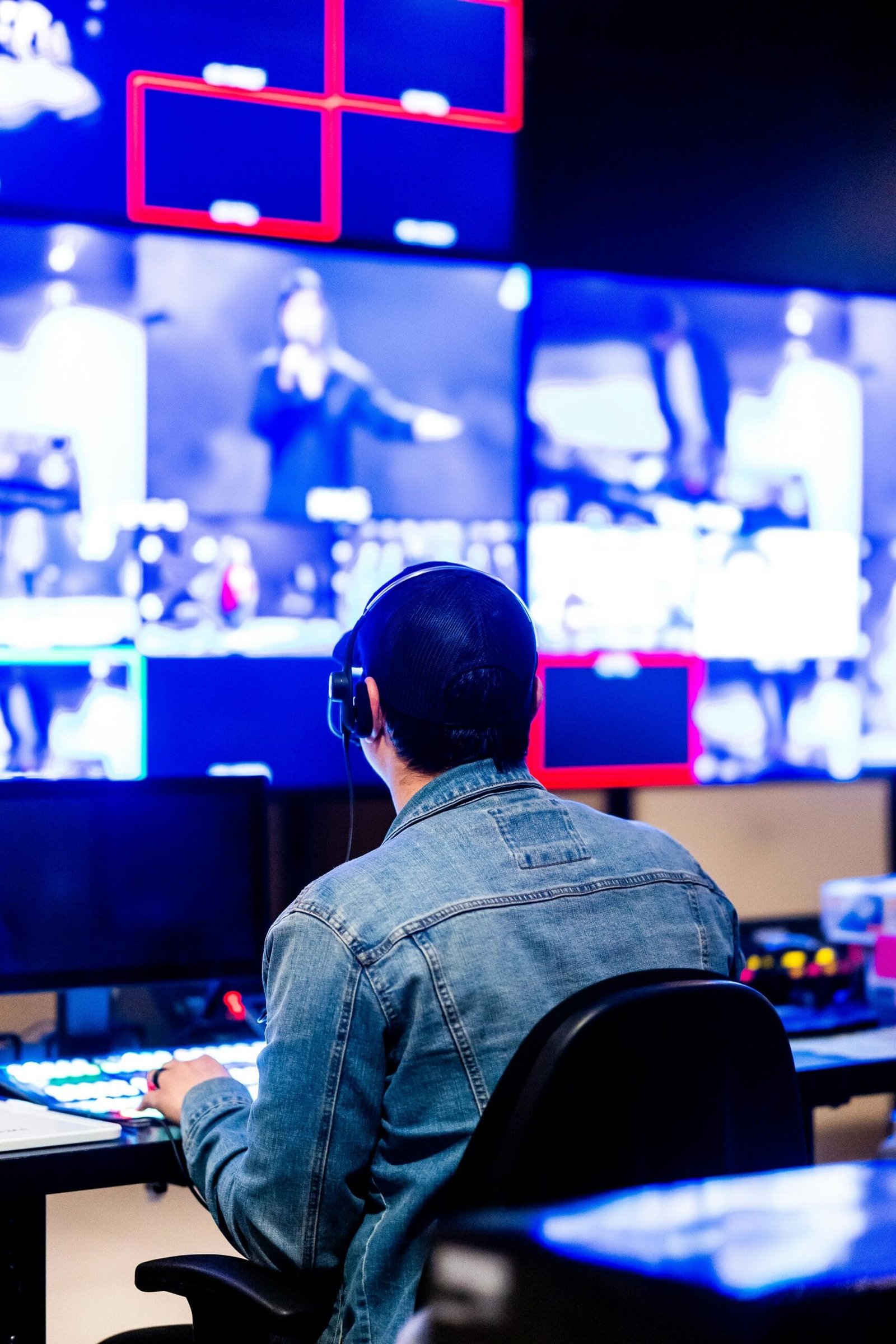Member Blog Post – Why Communication is Key for Live Events
In my experience, the success of any live-streamed event hinges on one critical element: communication. While the latest technology – whether it’s advanced cameras, streaming encoders, or cutting-edge production equipment – is undoubtedly important, it’s the clear and consistent communication that truly makes a difference. Without it, even the most high-end setup will fail.
From the initial briefing to the final minutes of the live stream, communication is essential at every stage. The foundation of a seamless, high-quality broadcast is laid long before we hit the Go Live button. Let’s take a deeper look into why communication is so vital and what I look for to produce a successful live stream.
1. Pre-Event Briefing: Laying the Groundwork for Success
The first and most crucial step in ensuring a successful live-streamed event is the pre-event briefing. This is where I gather all the key information from the client, and it serves as the foundation upon which the entire production is built. A detailed, in-depth conversation here helps me understand the client’s needs, set expectations, and plan the logistics accordingly.
During this briefing, I can cover important details like:
- Streaming Platform Selection: Which platform will be used (YouTube, Vimeo, Zoom, client’s own platform etc.)? Each platform has its own strengths and limitations, and the choice needs to align with the client’s goals and expectations.
- Resolution and Bandwidth Requirements: What’s the desired quality for the stream? Do we need 4K resolution, or will HD suffice? And what’s the expected internet bandwidth to avoid interruptions? A quick call to the venues tech team or IT department will help with this.
- Backup Plans: Technology is unpredictable, so having backup solutions in place—whether it’s redundant fail over or bonded internet connections, power sources, or even backup cameras—mitigates risks.
- Client, Speaker, and Branding Needs: What logos, graphics, or branding elements need to be included? Are there any specific speaker or presentation needs to consider? Remote speakers or remote delegate interaction?
- Technical Requirements: What cameras, software, hardware, signal processing kit and live switching tools will be used? Ensuring compatibility between these elements is key to a smooth event.
By having this conversation early on, I’m able to establish a clear vision for the event and create a plan that works for everyone involved. This briefing sets the tone for the entire production, and any miscommunication at this stage can lead to costly and stressful disruptions.
2. Communication Leading Up to Event Day: Keeping Everyone on the Same Page
Once the event plan is set in motion, the importance of consistent communication becomes even clearer. In the weeks leading up to the event, it’s crucial to maintain an open line of communication with both the client and my team. This ensures that everyone is on the same page, informed, and prepared for the show day.
Here’s why ongoing communication is so critical during this phase:
- Client Check-ins: Regular updates with the client help ensure that we’re on track with the client’s vision. These check-ins allow us to discuss any changes to the agenda, schedule, or content, as well as preview how the platform or video player will appear to attendees.
- Risk Reduction: With consistent communication, we can address potential issues early on, from last-minute speaker changes to changes in the technical setup. This keeps errors to a minimum and ensures that everyone is ready.
- Adjustments and Flexibility: Just like life, events are unpredictable and plans may need to change at the last minute. Whether it’s adding a remote speaker or tweaking the production setup, proactive communication ensures that everyone is ready to adapt.
- Cut-off Times: Setting clear deadlines for any last-minute changes or requests helps avoid disruptions. It also ensures that there is enough time for final preparations and testing.
Effective communication with the crew is just as important as communication with the client. Keeping the camera operators, sound engineers, streaming technicians, and other team members informed means that everyone knows their role and is ready for action. These pre-event communications ensure that everyone is in sync when the event kicks off.
3. Onsite Communication: The Heartbeat of Event Day Execution
On the day of the event, real-time communication is the glue that holds everything together. This is where all the preparation pays off, but only if the communication flow is flawless. The key to a smooth live event is ensuring that every member of the crew can coordinate effectively with each other.
Here are the tools and strategies I rely on to ensure that everything goes off without a hitch:
- Wired, Wireless, or Digital Communication Systems: Whether we use professional wired comms, wireless headsets, or digital comms apps, these systems ensure that instructions are clear and immediate. They allow the us to communicate with camera operators, sound technicians, and other crew members with ease.
- Real-time Coordination: During a live broadcast, everything happens in real-time. A successful live stream depends on seamless transitions between segments, smooth cueing, and the ability to troubleshoot on the fly. Communication tools enable the team to stay synchronized and address issues as they arise.
- Efficient Troubleshooting: Live events are unpredictable, and technical glitches can happen at any moment. Having a robust communication system in place allows the team to quickly resolve issues without the audience noticing, ensuring that the event continues without interruption.
Onsite communication is not just about talking; it’s about staying in sync. When every team member is on the same page, it leads to confident execution and smooth transitions. With the right comms setup, I can ensure that everyone from the technical director to the crew members is operating in perfect harmony.
Communication = Confidence
At the end of the day, live-streamed corporate events leave no room for miscommunication. In the fast-paced world of live broadcasting, there’s no room for confusion or hesitation. Clear, consistent communication starting from the first call with the client, continuing through the pre-event planning phase, and culminating in smooth, real-time coordination on event day is the key to a polished, professional production.
Effective communication is not just about exchanging information; it’s about building confidence. When everyone knows what’s expected of them and is equipped with the tools they need to succeed, the entire team can focus on executing the event flawlessly. This confidence is reflected in the quality of the live stream, and ultimately, in the satisfaction of the client and the audience.
By combining structured planning, proactive communication, and efficient onsite coordination, we can deliver live-streamed events that are not only technically sound but also stress-free for everyone involved.
Take Action Today
This blog has been written by one of our members – Onstream Productions. If you would like more information about how Onstream can help you improve your communication when you are running live streamed events, do contact them here.
If you would like to share your expertise, we welcome guest blogs from our members, so contact us today and lets upskill together.
📢 Sign up today and put your events business at the forefront of the events industry!
🔗 [Sign-Up here]



